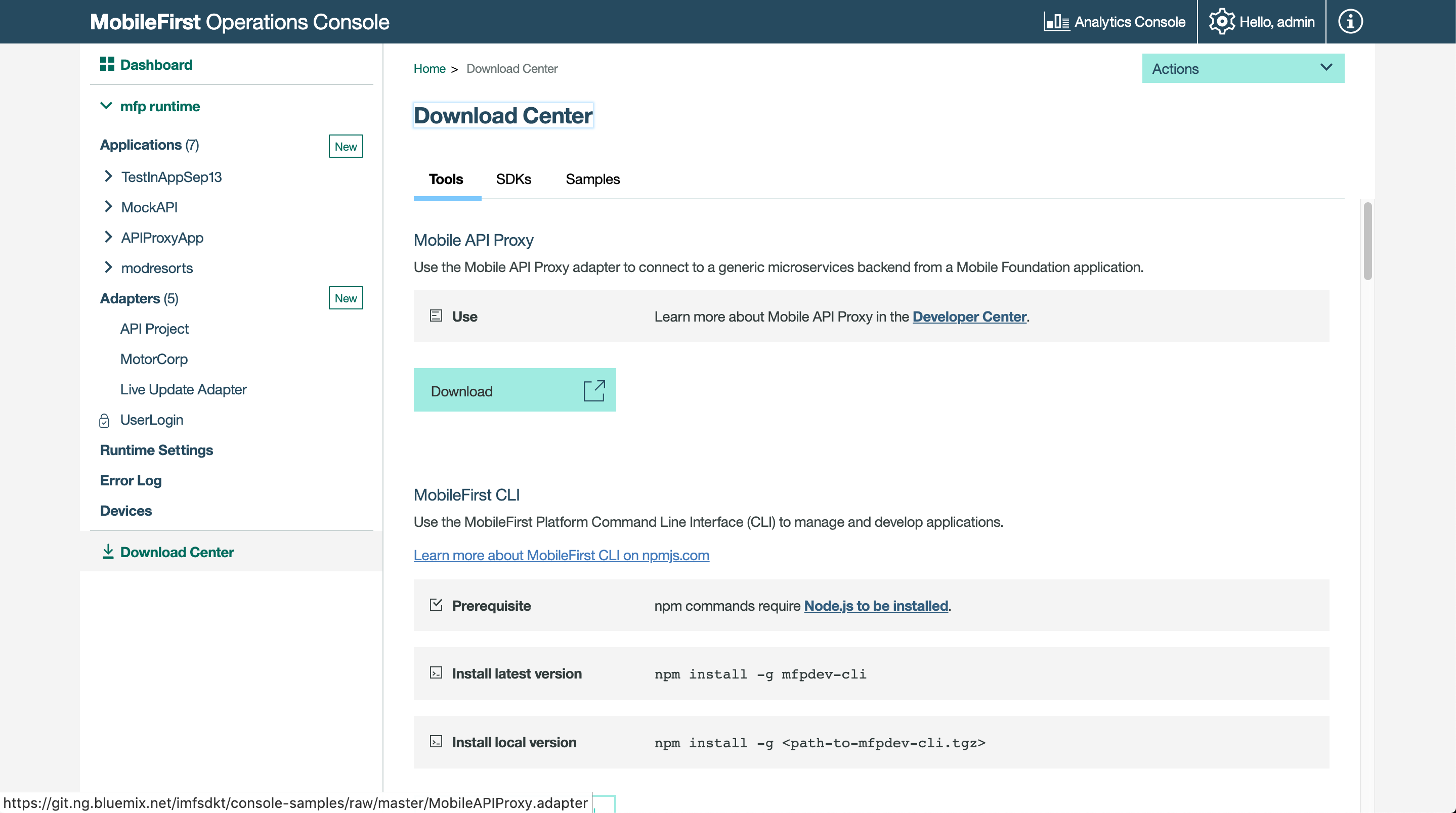Connect to Microservices using the API Proxy
improve this page | report issueAPI Proxy
When connecting to the enterprise backend, it is possible to leverage the security and analytics of MobileFirst platform using the API Proxy. As the name suggests, it is a proxy that can be used to proxy over the requests to the actual backend.
Some of the Advantages of using the API Proxy
- The actual backend host is not exposed to the mobile app and stays secure in MobileFirst server.
- Get the analytics of the requests that are made to the backend
How to use the API Proxy?
-
Download the Mobile API Proxy adapter from the Mobile Foundation Console.

-
Deploy the API Proxy adapter to Mobile Foundation server.
- Configure the backend URI in the API Proxy adapter configuration. The URI should be of the format
protocol:host:port/context. For example,http://secure-backend/basecontext/. -
Make the requests to the backend using the
WLResourceRequest API. Use the API call code snippet from the MOBILE CORE section. Alter the options object to setuseAPIProxykey to true.Example:
var resourceRequest = new WLResourceRequest( "weather/city/Miami", WLResourceRequest.GET, { "useAPIProxy": true } ); resourceRequest.send().then( function(response) { alert("Success: " + response.responseText); }, function(response) { alert("Failure: " + JSON.stringify(response)); } );
Inclusive terminology note: The Mobile First Platform team is making changes to support the IBM® initiative to replace racially biased and other discriminatory language in our code and content with more inclusive language. While IBM values the use of inclusive language, terms that are outside of IBM's direct influence are sometimes required for the sake of maintaining user understanding. As other industry leaders join IBM in embracing the use of inclusive language, IBM will continue to update the documentation to reflect those changes.
Last modified on December 20, 2019